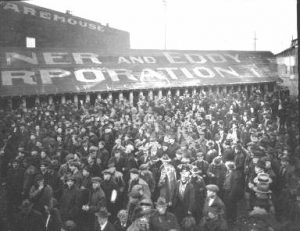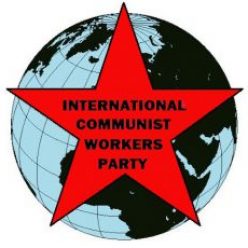Celebrating the 100th Anniversary of the Seattle General Strike

When I tell people I live in Seattle, USA, they imagine a beautiful city surrounded by water and mountains, where people drink coffee and work at Amazon or Microsoft.
But what they may not know is that Seattle and the Pacific Northwest have long been a hotbed of working-class struggle and left-wing politics.
In 1918 the Seattle Labor Council began publishing The Union Record. It was the only US daily to print Lenin’s April 1918 speech to the Congress of Soviets. Twenty thousand copies were distributed to workers on Seattle’s streetcars and ferries. Another 20,000 were reprinted in Vancouver and circulated throughout Canada.
A young woman named Anna Louise Strong wrote for the Union Record. In her autobiography I Change Worlds she says, “This Lenin pamphlet was seized by workers eager to know how the workers of Russia were running their new state… It was plain to everyone that these workers were conscientiously and energetically studying how to organize their coming power.”
On January 21, 1919, 35,000 Seattle shipyard workers walked off the job, and 14,000 more in Tacoma. They had just negotiated their first post-war contract. But they discovered that arms were in the sealed cases that were being shipped to counter-revolutionary forces in Russia. They refused to be a part of it.
On February 2, union representatives met to plan a general strike in solidarity. Strong wrote an appeal that went out in the Union Record:
“We are undertaking the most tremendous move ever made by labor in this country, a move that will lead—No One Knows Where!!
“Labor will feed the people…Labor will care for the babies and the sick…Labor will preserve order.”
The sexist bosses’ media accused her of “changing the strike into a drama…the laborers versus the capitalists, us versus them.” They said the editorial had a “romantic touch.” But they had to admit that “it captivates people.”
In truth, Strong focused on the essence of communism: labor will provide and labor will run society.
All in all, about 100,000 workers went out, including 40,000 nonunion workers. Some were Japanese immigrant barbers, hotel and restaurant workers, who were not allowed to join the racist AFL unions.
The strikers did set up childcare, medical care, kitchens, garbage collection and hospital laundry. World War I veterans provided an unarmed security force. No money was exchanged, no one was arrested or killed.
Of course, the Seattle ruling class could not allow this to go on. They busted the general strike after five days. The shipyard workers stayed out until March 11th. A few months later a similar general strike took place in Winnipeg, Canada (see box).
The Seattle General Strike is an exciting part of the history of our international working class. This history is either ignored or portrayed as a disaster where the workers were duped by the left.
Although the strikers did not win higher wages or benefits, they learned valuable lessons and passed them on. Many, like Anna Louise Strong, embraced communism. She traveled to the Soviet Union and China and wrote about the accomplishments of the proletariat.
Members of the ICWP have learned that, without a doubt, capitalism cannot be reformed. Capitalism cannot survive without exploitation of the working class, and can only achieve this by using racism, sexism, and xenophobia to divide us.
Capitalism causes poverty, homelessness, starvation, disease, war, and destroys the environment. Why would we want to keep such a system?
Only with communism can the working class create a world without borders, without banks and without money.
When we march this May Day, we should remember the workers who walked and marched on the very same streets 100 years ago. Long live the International Working Class! Long live Communism!
The 1919 Winnipeg general strike, a few months after the Seattle general strike, followed a similar pattern. But it lasted longer and the conflict was more intense.
During World War I, the bosses had brought in tens of thousands of immigrants to do the work of absent soldiers. They were ruthlessly exploited as cheap labor. As a result, they were especially eager to strike. Many enthusiastically supported the Russian Revolution.
The building workers walked out on May Day, 1919. Two weeks later, thirty thousand workers were off the job and the general strike began. The first to walk out were five hundred women telephone exchange operators. As in Seattle, the strikers guaranteed that essential services, like distributing milk and bread, were carried out.
The bosses ramped up the xenophobia in an unsuccessful attempt to split the strikers. They denounced strike organizers as “alien scum” and mocked leaders who spoke with a different accent. They changed the Immigration Act to allow deportation of even British-born workers and jailed some leaders in illegal internment camps.
The bosses finally cracked down. On June 21, the RCMP (national police force) attacked a demonstration of strikers and veterans, killing two and injuring thirty. The RCMP and military patrolled the streets with machine guns.
The Winnipeg strikers were not prepared for this level of violence. They called the strike off a few days later. But the lessons learned – that unionism is not enough – were not forgotten. For example, veterans of the strike were instrumental in founding the Canadian Communist Party.

